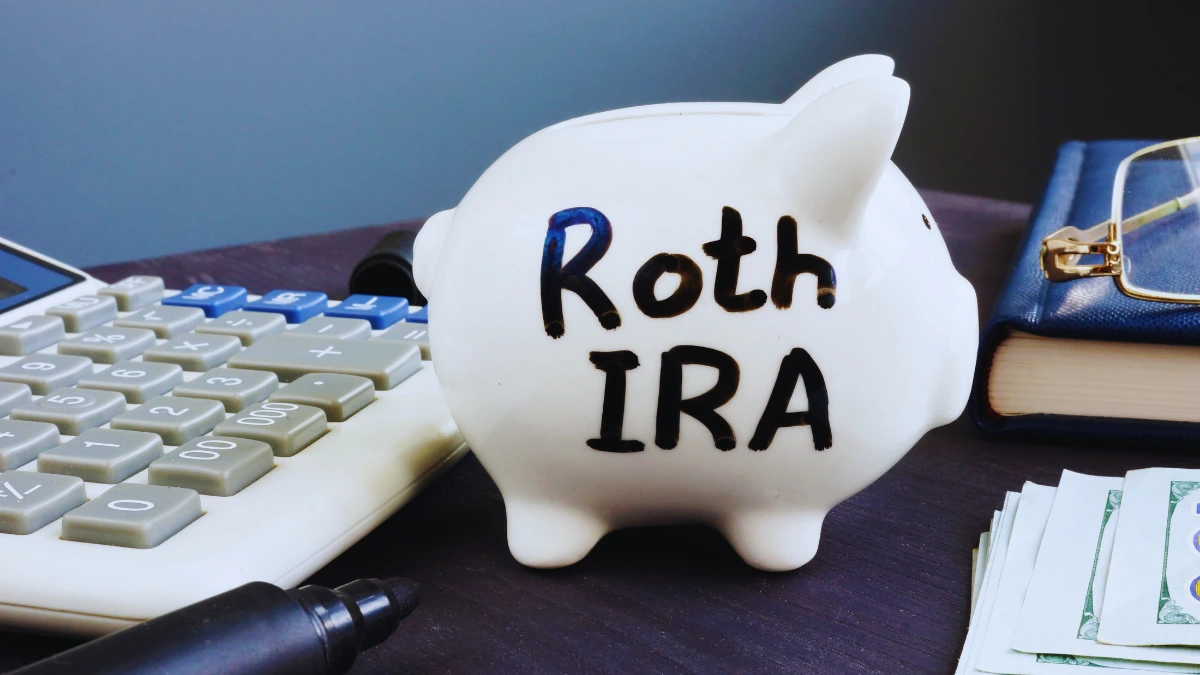You check your 401(k) balance. It looks good. Your company matches 4%. Everyone says you’re doing great.
Here’s what nobody tells you: You’re trapped.
Labor economist Teresa Ghilarducci doesn’t sugar-coat it. She calls the 401(k) system a “failed experiment.” While Wall Street gets rich, workers lose an average of $30,000 to hidden fees over their careers.
The 401(k) wasn’t designed to replace pensions. It started as a tax shelter for rich executives. Now it’s the main retirement plan for over 60 million Americans. And it’s failing.
Here’s what’s really happening:
- 44% of people aged 55-64 have zero retirement savings
- 41% of workers don’t know they pay any 401(k) fees (GAO survey)
- 29.2 million forgotten accounts hold $1.65 trillion
You’ll learn nine ways your 401(k) traps you. Then I’ll show you how to escape in 2025.
Trap #1: The Hidden Fee Monster That Eats Your Money Every Day

41% of workers don’t know they pay 401(k) fees. Not a single penny.
Think about that. Almost half of all workers get robbed daily and don’t know it.
Your 401(k) has three types of fees:
- Investment fees (expense ratios, management fees)
- Administrative fees (recordkeeping, compliance)
- Individual service fees (loans, withdrawals)
The average small plan charges 1.37% per year on plan assets. That sounds tiny. It’s not.
Here’s the real cost: Put $100,000 in a 401(k) with 1% annual fees. After 20 years, you lose $30,000 to fees alone. If you paid 0.25% instead, you’d lose only $7,500.
That’s a $22,500 difference. For doing nothing different except choosing a lower-fee option.
But here’s the worst part. Many companies hide fees through “revenue sharing.” Your investment funds kick money back to the plan administrator. You never see this on any statement.
Many 401(k) providers hide most of their administration fees in fund expense ratios through these revenue-sharing practices. Some providers hide over 60% of their true costs this way.
You think you’re paying 0.5%. You’re really paying 1.2%. The difference costs you thousands.
Trap #2: The “Free Money” Employer Match Lie

Your company offers a 4% match. Sounds great, right?
Wrong. It’s a golden handcuff.
Here’s how they trap you:
Most companies don’t give you the match right away. They use “vesting schedules.” You might wait up to 6 years to own your employer’s contributions.
Change jobs before you’re fully vested? You lose part or all of the match.
The numbers are scary:
- Only 46% of employers give you the match immediately
- About one-third make you wait a full year
- The average worker changes jobs every 4.2 years
Do the math. If you change jobs every 4 years but need 6 years to vest, you never get the full match.
Scenario: A worker gets a $2,000 annual match with a 6-year vesting schedule. They change jobs after 4 years. They lose $4,000 in unvested matches. Meanwhile, they paid high 401(k) fees for 4 years.
The “free money” wasn’t free. It was expensive bait.
And if you leave money in old 401(k) plans? Old employers frequently charge extra fees for maintaining your account. You’re no longer their employee. You’re just a burden.
Trap #3: Your Money Becomes Their Prisoner

You put money in a 401(k). Then you can’t touch it.
Try to withdraw your own money before age 59½? 10% penalty plus income taxes. That’s often 25-40% of your withdrawal gone.
The crisis is getting worse. Early withdrawals hit an all-time high of 3.6% in 2024. That’s double what it was a few years ago.
Why are more people taking penalties? Because life happens:
- Medical emergencies
- Job loss
- Housing costs
- Family crises
8% of working adults tapped their retirement savings in the last 12 months. They paid massive penalties to access their own money.
Here’s a scenario: You need $10,000 for medical bills. You withdraw it from your 401(k). After the 10% penalty and taxes, you might only get $6,500. You paid $3,500 in penalties and taxes to use your own money.
Even “hardship withdrawals” hit you with taxes and paperwork. You have to prove you can’t get money anywhere else. Then you still pay income tax on everything you take out.
New rules in 2025 let you take $1,000 per year without penalties. But you can’t take another emergency withdrawal for 3 years unless you pay it back.
$1,000 doesn’t cover most real emergencies. It’s a band-aid on a broken system.
Trap #4: Your Investment Menu is Designed to Limit You

Open a regular investment account. You can buy any stock, bond, or fund you want. Thousands of options.
Your 401(k) gives you maybe 20-30 choices. All picked by your employer. All are more expensive than what you could buy yourself.
You can’t:
- Buy individual stocks
- Invest in real estate funds (REITs)
- Buy cryptocurrency
- Choose low-cost index funds from different companies
- Switch to better funds when yours perform badly
You’re stuck with whatever your company picked. Usually, expensive mutual funds pay kickbacks to the plan administrator.
Most people get pushed into “target-date funds.” These auto-pilot investments sound smart. They’re just expensive and mediocre.
Target-date funds charge higher fees for doing something simple: moving your money from stocks to bonds as you age. You could do the same thing yourself with low-cost index funds for half the price.
But you can’t. You’re trapped in their expensive menu.
Outside a 401(k), you could invest in a total stock market index fund for 0.03% per year. Inside your 401(k), a similar fund might cost 0.75% per year. That’s 25 times more expensive for the same thing.
Trap #5: The Forgotten Account Money Pit

Change jobs? Most people leave their 401(k) behind.
Big mistake.
There are 29.2 million forgotten 401(k) accounts holding $1.65 trillion. That number jumped 20% in just two years.
Here’s what happens to forgotten accounts:
- Your old employer can charge extra maintenance fees
- You stop getting statements and lose track
- Companies merge or change plan administrators
- Small accounts get liquidated without telling you
- Fees eat away at your balance while you’re not watching
Scenario: A worker had $8,000 in their 401(k) when they left a job. They never rolled it over. Five years later, they remembered the account. The balance was $6,200. Fees ate $1,800 of their money.
Your former employer doesn’t care about your account. You’re not their employee anymore. You’re just a costly account they want to get rid of.
Some companies force people out of their plans if their balances are small. They cut you a check, which becomes taxable income plus penalties if you’re under 59½.
You lose your money either way.
Trap #6: The Government Tax Bomb Waiting to Explode

You put money in a 401(k) to avoid taxes now. But the tax bill comes due later. With interest.
At age 73, the government forces you to start withdrawing money. These “Required Minimum Distributions” (RMDs) happen whether you need the money or not.
Here’s the problem: All your 401(k) withdrawals get taxed as regular income. Not capital gains rates. Regular income rates.
If you have a big 401(k), RMDs can push you into higher tax brackets. You might pay 22% or 32% tax rates on money you could have invested in a regular account and paid 15% capital gains tax.
It gets worse: Large RMDs can make your Social Security benefits taxable. They can push you into higher Medicare premium brackets. One withdrawal affects everything.
Scenario: A retiree has $500,000 in their 401(k) at age 73. Their RMD is about $20,000. Combined with Social Security, this pushes them into a higher tax bracket. They pay more taxes on everything.
If they had invested in a regular taxable account instead, they could control when and how much to withdraw. They could manage their tax bill.
In a 401(k), the government controls your withdrawals. You’re trapped in their timeline.
Trap #7: Market Crashes Can Destroy Your Retirement Dreams

Stock markets crash. It happens every few years.
If you’re lucky, crashes happen when you’re young. You have time to recover.
If you’re unlucky, crashes happen right before or during retirement. You’re destroyed.
This is called “sequence of returns risk.” The timing of market crashes matters more than average returns.
2008 scenario: People retiring in 2008 lost 25-40% of their 401(k) value. Many had to delay retirement for years. Some never recovered.
2020 scenario: Markets crashed 30% in March. People who needed to retire that year got crushed.
Your 401(k) has zero protection from market crashes. You bear all the risk. If markets crash when you need the money, you’re out of luck.
Traditional pensions had professional managers and guarantees. Companies bear the market risk, not workers.
401(k)s transfer all that risk to you. But you don’t get professional management. You get a limited menu of expensive funds and hope for the best.
The math is brutal: If your account drops 50% right before retirement, you need a 100% gain just to break even. That could take years or decades.
You can’t time the market. But the market can time you out of a decent retirement.
Trap #8: The “Work Until You Die” False Promise

The 401(k) system assumes you’ll work for 40 years. It assumes a steady income. It assumes you can work until 65 or 67.
None of that is realistic anymore.
44% of households aged 55-64 have zero retirement savings. Zero.
Financial experts say, “Just work longer.” Teresa Ghilarducci calls this advice dangerous nonsense.
Here’s reality: Most people get pushed out of work before they plan to retire. Age discrimination is real. Health problems are real. Company layoffs are real.
Most retired people say they were “pushed out” of work. (Ghilarducci research) They didn’t choose to retire. They were forced out.
“Work longer” advice ignores:
- Age discrimination in hiring
- Physical demands of many jobs
- Health problems that increase with age
- Company preferences for younger, cheaper workers
The system creates retirement roulette. If you’re lucky enough to work until 67 and lucky enough to retire during good market years, you might be okay.
If you’re unlucky with timing, health, or job loss, you’re broke.
401(k)s put all the risk on workers. All the luck requirements for workers. All the responsibility is on the workers.
But workers don’t control market timing, age discrimination, or health problems.
Trap #9: Wall Street’s Money Machine Runs on Your Dreams

Who really wins in the 401(k) system?
Not workers. Wall Street.
The 401(k) industry collects billions in fees every year. Win or lose, they get paid. Your account goes down? They still collect their fees.
Workers bear all the risks:
- Market crashes
- Bad fund performance
- High fees
- Job loss
- Health problems
- Bad timing
Wall Street bears no risks:
- They collect fees no matter what
- No fiduciary duty to put your interests first
- No guarantees about your retirement
- No responsibility for bad outcomes
It’s the perfect business model. Guaranteed revenue. No liability. All marketing talks about “your future” while they profit from your present.
The lobbying machine spends millions protecting this system. Every time Congress talks about fee limits or better rules, the industry fights back hard.
They don’t want transparency. They don’t want competition. They want to keep collecting fees from trapped workers who don’t know they have better options.
Teresa Ghilarducci is right. It’s a failed experiment. Failed for workers. Massively successful for Wall Street.
The Smart Alternatives: How to Escape the 401(k) Trap in 2025

You have options. Better options.
Traditional and Roth IRAs give you complete freedom. You can contribute $7,000 per year ($8,000 if you’re 50+). Choose any broker. Buy any investment. Pay rock-bottom fees.
Fee comparison: Average 401(k) charges 1.37% per year. You can get total stock market index funds for 0.03% per year at Fidelity or Vanguard. That’s 45 times cheaper.
Self-Directed IRAs let you invest in almost anything:
- Real estate
- Precious metals
- Cryptocurrency
- Private businesses
- Notes and loans
You can’t do any of this in a 401(k).
Solo 401(k)s work great if you’re self-employed. Contribute up to $70,000 per year in 2025. You get the high contribution limits without employer restrictions.
SEP IRAs let business owners contribute up to 25% of income, a maximum $70,000 in 2025. Simple setup. Low fees. No vesting schedules.
Regular taxable accounts give you complete flexibility. No penalties for early withdrawals. No required distributions. Access your money anytime for any reason.
Scenario: Instead of a 401(k), a worker invests $500 per month in a low-cost index fund at Vanguard. They pay 0.03% fees instead of 1.37%. After 30 years, they have $43,000 more money. Plus, complete flexibility to access it anytime.
The catch: You lose the employer match. But run the numbers. High fees and restrictions often cost more than the match is worth.
Smart strategy: Contribute just enough to get the full employer match. Put everything else in low-cost IRAs or taxable accounts.
Your Action Plan: 7 Steps to Break Free in 2025

Step 1: Calculate Your Real 401(k) Costs
Request a fee disclosure document from your plan administrator. Add up all the fees:
- Investment expense ratios
- Administrative fees
- Individual service fees
Use the Department of Labor’s fee calculator at dol.gov. See how much you’re really paying over time.
Step 2: Evaluate Your Employer Match
Calculate the true value:
- Match percentage
- Vesting schedule
- How long do you plan to stay at this job
- Probability you’ll leave before fully vested
Compare match value to fee costs over time. You might be surprised.
Step 3: Research Better Options
Compare IRA providers:
- Fidelity: $0 minimums, rock-bottom fees
- Vanguard: Investor-owned, low costs
- Schwab: No minimums, good fund selection
For self-directed investing:
- Directed IRA: Real estate and alternatives
- Alto IRA: Alternative investments
- Rocket Dollar: Self-directed 401(k)s
Step 4: Open Your Escape Account
Start with a traditional or Roth IRA at a low-cost provider. You can always add self-directed options later.
Fund it with $500-1000 to start. See how much better your options are.
Step 5: Plan Your Transition
If you’re staying at your job: Reduce 401(k) contributions to just get the match. Put everything else in your IRA.
If you’re changing jobs: Plan a direct rollover of your old 401(k) to your new IRA. Don’t let them cut you a check.
Step 6: Execute Your Rollover
Direct rollover: Your old 401(k) provider sends money directly to your new IRA. No taxes or penalties.
Indirect rollover: You get a check and have 60 days to deposit it in an IRA. Riskier but sometimes necessary.
Don’t cash out. That triggers taxes and penalties immediately.
Step 7: Take Control of Your Investments
With your IRA, you can:
- Buy low-cost index funds
- Invest in individual stocks
- Add international exposure
- Include real estate investments
- Keep costs under 0.1% per year
Set up automatic contributions to replace your old 401(k) deferrals.
Warning signs: HR departments and financial advisors might pressure you to stay in the 401(k). They get paid to keep you trapped. Make decisions based on math, not their sales pitches.
*Teresa Ghilarducci was right: “It’s not the fault of people that they don’t have enough savings in their individual retirement account or their 401(k)s. It’s the fault of the system, and the whole system needs to be reformed.” (Frontline interview)
You can’t reform the whole system. But you can escape it.






